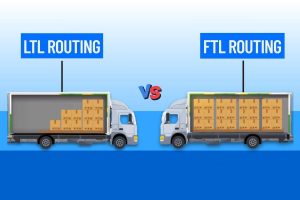Ecommerce shopping is getting a boom all over the world. The unprecedented growth rate makes it clear that it will get a massive increase of 200% soon. When we look at the figures of the Ecommerce share of total global retail sales, predictions on continuous growth seem right.
With an increasing digital footprint, India has also emerged as the fastest growing online shopping hub. After the corona crisis, internet penetration and mobile usage have doubled worldwide, which signals the enormous potential in ecommerce. You would be surprised to know that online shopper preferring to purchase from overseas retailers.
The shift in digital shopping has coined a new term- international E-commerce.
It’s allowing retailers to expand internationally and make the most out of the lucrative opportunities in cross-border E-commerce.
The best instance is the Ecommerce giant- Amazon has increased the cumulative Ecommerce export sales from India to $2 billion with Amazon’s global seller program. It’s another indication that there is a high demand for ‘Made in India’ products in the international market.
The perks of selling in the global market are enormous such as
The opportunity of global selling allows retailers to get access to millions of marketplace existing users. Strengthen the cashflow as Diwali is not the only peak selling season; instead, they get high traction during Christmas, Black Friday, Cyber Monday, and Ramadan. Eliminates the need to build and manage the infrastructure, logistics, and customer service to simplify the shopping experience.
However, the impressive success stories of Indian sellers (Individuals, and micro, small, and medium enterprises) don’t have complete control over the payment processing, and the deduction is made by the platform as commission too. Despite the brilliant performance of the products and services in the international markets, building the brand is not possible, and you remain as a seller listed on the marketplace.
It’s a sign, building the custom online storefront and then expanding in the international market is better than enjoying low-hanging fruit (Quickly getting listed and start selling on the marketplaces).
How can Indian Ecommerce retailers stay behind? Are you interested in going beyond the domestic market and peak in global markets? If so, it’s the best decision you have made. The opportunity can turn your business into a profitable business, but everything is not so rosy. Gaining global recognition requires you to go ahead with a systematic approach and planning.
Don’t know how to cook the recipe of success and the magical ingredients to add? We have got your needs covered in this blog, where the steps to go internationally successfully with your existing Ecommerce store illustrated. Let’s dive in!
In-depth research- a must-have!
Trading globally provides new horizons to businesses to grow, but it’s not child’s play. Market research and analysis are essential to check the financial feasibility of expansion decisions. Various tools help to perform the research and analysis.
Google trends help in identifying the users’ interest in the product that Ecommerce will sell in a particular country. Google analytics tool generates reports for the users’ interest in the product in different geographical nations. Later, a SWOT analysis helps in finding the gaps to plug with global expansion.
Start with small Retailers
Global expansion doesn’t mean trading in every single country on the planet. In the beginning, you only dip your toe in the water. If your research state that ten countries are having a high demand for the product that your Ecommerce store sells.
Tap into international markets gradually to test the water, which is a better approach because you can’t run unless you don’t know how to walk.
Up your localization game
Outgrowing and outperforming in the global market requires you to give a homely feeling to the overseas buyers. If you want to play a catch up with leading local players, you have to localize everything, including- creating dedicated websites with location-specific experience, launching relevant offers, enabling payment in the local currency, hiring an in-country team, and geography-specific policies.
Note: The translation for every geography-specific website must be qualitative. The local VAT laws and tax are the financial obstacles that pops-up during expansion. Be ready for them.
Don’t forget the international shipping options!
When you are making inroads into global markets, then shipping in foreign countries stays at the heart of Ecommerce selling. Delivering the product conveniently and achieving a high level of customer satisfaction are crucial for international sales.
Partner with international shipping companies that enable cross-border deliveries on-time in a hassle-free manner. However, it comes with a language barrier, loads of legal processes, long delivery time, and high shipping cost problems. The best solution is to either find out the local shippers in different countries or get associated with fulfillment partners having warehouse locations in different countries that will help you address all the challenges you face while shipping from India. It enables faster delivery, reduce shipping cost, and make the customer happy.
Mobile commerce- a window of opportunity
More than half of the Ecommerce sales are done through mobile rather than desktop. The Ecommerce store needs to mobile-optimize the store to keep up with users’ shopping preferences and keep them engage in shopping.
The best practice is to design the mobile-responsive store or build PWAs (Progressive web apps) so that users visiting the store from different devices and browsers get consistent experiences. Keeping the mobile on priority has helped many Ecommerce giants to increase sales, improve loyalty, and offer a personalized experience.
RetailersMarket locally with government support
Increasing user penetration in foreign countries is a hard nut to crack in. That’s where putting localization at the heart of marketing strategy will help.
Leveraging social power by creating dedicated social media pages for different countries, and acquiring and engaging the customers with localized messages is one of the best marketing approaches.
Besides, partnering with local influencers in various countries helps in gaining customers’ trust and building a great fan following. You can try influencer marketing to tap into new markets and increase popularity.
Most important, the government may help you to propel the Ecommerce store in new markets. Some nation governments have created programs that help companies trying hands in exportation or trade in foreign markets. Conduct research for the support that the government is providing to make the most advantage of it.
Conclusion
When your Ecommerce store is performing amazingly in the local market, then expanding globally is a natural progression to it. Beginning your journey of trading worldwide deserves strategic planning and thoughtful considerations. It’s so because the tempting expansion requires you to deal with international market regulations, weigh product demand with international shipping options, look for a competitive vacuum, customer service, and marketing strategies. Once you finish this, it’s time to go to the international market.
All the best!












